
Travel
Busan
Haeundae beach
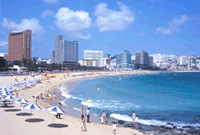 |
Many people think of Haeundae, when it comes to Busan. No doubt Haeundae is the most popular spot for tourists in Busan. Every summer so many people come down to Haeundae for holiday. The beach looks very modern as there are many buildings and hotels around the beach. Tel : +82-51-749-4071 Address : U 1-dong, Haeundae-gu, Busan Metro Line 2, Haeundae Station (Exit 3 or 5) → Walk approximately 600m towards Haeundae Beach |
Nurimaru APEC House
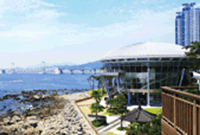 |
In harmony with the exquisite scenery of Dongbaek Island, the venue of the APEC Summit Conference overlooks Haeundae Beach and the beautiful landscape around Gwangan Bridge. Another attraction that you should not miss is the traditionalstyled Korean pavilion re-built with a modern architectural touch. Tel : +82-51-744-3140 Address : 714-1 Woo-dong, Haeundae-gu, Busan Metro Line 2, Dongbaek Station. (Exit 1) → Busan Westin-Chosun Hotel → Dongbaek Park |
U.N. Memorial Cemetery
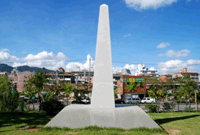 |
UN sculpture park is located near UN Memorial cemetery. You can look around many sculptures from all over the world with the theme of freedome, peace and unification. These were donated by sculptors from 21 countries that sent troops to Korea during the war in 2000 for the memory of 50th anniversary of Korean war. Tel : +82-51-625-0625 Homepage URL : http://www.unmck.or.kr/ |
Taejondae
 |
Taejongdae, a park located at the southern end of Yongdo Island, commands magnificent views. The name Taejongdae comes from the fact that King Taejong Muyol of the Shilla Dynasty was infatuated with this scenery and made frequent visits to this area. This location is the closest point to the Japanese island of Tsushima, which you can see from Taejongdae on a fine day. Address : San 29-1 Dongsam-dong, Yongdo-gu Tel: +82-51-405-2004 Metro Line 1 Busan Station (Exit 7) → Bus 88, 101 → Taejongdae Terminus Homepage URL : http://www.taejongdae.or.kr |
Gwangan Bridge
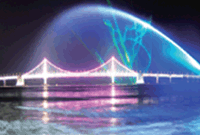 |
When you drive across Gwangan Bridge on a fine day, you can see the best tourist attractions of Busan at a glance, including the Oryukdo Islands, Dongbaek Island and Dalmajigil Road. At night, this creates a very attractive atmosphere with all the bright lights of the city. In October, when the “Busan Festival of Light”takes place, Gwangan Bridge is more beautiful than ever. Address : Gwangan-dong, Suyong-gu Tel : +82-51-780-0077 Metro Line 2 Gwangan (Exit 3 & 5) → 700m to Gwangalli Beach Homepage URL : http://www.gwanganbridge.or.kr |
Yongdusan Park
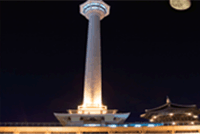 |
This park, which can be early reached from Gwangbokro by escalator, provides a space for relaxation in the downtown. In this park, Busan Tower, an icon of the city, stands in stately glory. The night view of the beautiful Busan harbor from the 120-meter-high observation deck is unique and gorgeous. Address : 33 Yongdusan Park Way, Jung-gu (1-2 Gwangbok- dong 2-ga) Tel : +82-51-860-7820 Metro Line 1 (Exit 1) → Gwangbokro Fashion Street → Ride the escalator Homepage URL : http://www.yongdusanpark.or.kr |
Jagalchi Market
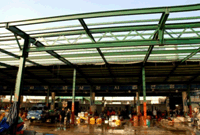 |
The Jagalchi Market is Korea's largest seafood market. After the Korean War the market solidified itself as a fish market. Most of the people who sell fish are women, so the women who sell here are called 'Jagalchi Ajumma,' 'ajumma' meaning middle-aged or married women. This market represents Busan and is famous throughout the country. If you visit you can eat fresh raw fish right at the market. Even these days you can see women selling mackerel, sea squirts (ascidians) and whale meat on wooden boxes along the road. Tel : +82-51-245-2594~5 Homepage URL : http://www.jagalchimarket.org |
Gwangalli Beach
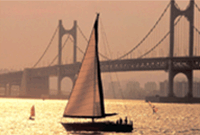 |
The passion of summer is beautiful at Gwangalli Beach. The beach is in good harmony with Gwangan Bridge which spans the bay, and the night view of the sea from the beach is exceptionally beautiful. During the summer, many festive activities and interesting events take place on streets and outdoor stages in the area near Gwangalli Beach. Address : 192-20 Gwangan 2-dong, Suyong-gu Tel : +82-51-622-4251 Metro Line 2 Gwangan Station (Exit 3 or 5) → go 700m towards Gwangalli Beach Homepage URL : http://emailgwangalli.suyeong.kr |
Hurshimchung(Hotel Nongshim)
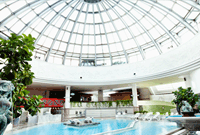 |
HurShimChung’ urban health spa – an enjoyable space for relaxation and healthful rejuvenation. This enormous spa occupies some 1,300 pyeong (4,3002), and is able to accommodate a total of 3,000 spa-goers, with about forty different baths including the longevity bath, hinoki wood bath, cave bath, and an open-air outdoor bath. There are also a variety of special event baths that use natural bath powders and seasonal Oriental herbal medicine ingredients according to the time of year. Furnished with super-size hot spring baths in wide open spaces with skylights letting in natural light, the spa has beautiful interiors that reflect a fine architectural charm, offering a distinctive relaxing experience found only at HurShimChung. Other facilities like jjimjilbang saunas are also available for enjoying a relaxing and pleasant time with your family. Address : 23, Geumganggongwon-Ro, 20Beon-Gil, Dongnae-Gu, Busan, korea Tel : +82-51-550-2200 Homepage URL : http://www.hotelnongshim.com/eng/html/03_spa/spa_01.php |
Busan Cinema Center
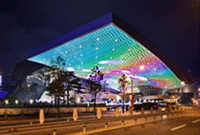 |
Busan Cinema Center is the first video multi-cultural space in the world where films and performance arts are integrated. It is also the venue for the Busan International Film Festival (BIFF). The building is equipped with three movie theatres and a multi-purpose performance hall. The building also contains over 120,000 LED lights under the world's largest roofed stage providing a fantastic sight at night. Address : #1467 U-1 Dong Haeundae-Gu Tel: +82-51-780-6000 Metro Line 2 Centum City Station (Exit 6) → Busan Cinema Center Homepage URL : http://www.dureraum.org |
More Information
http://etour.busan.go.kr/index.busan
Gyeongju
Gyeongju Yangdong Village
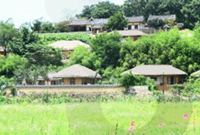 |
Gyeongju Yangdong Village is Korea’s largest traditional village, showcasing the traditional culture of the Joseon Dynasty and the beautiful natural surroundings. Thanks to its many cultural heritages, including treasures, national treasures, and folklore materials, the entire village has been designated as a cultural heritage site. Many people have visited this village to see its wealth of cultural heritages and scenic surroundings. Charles, Prince of Wales, visited this village in 1993. Tel : +82-54-762-4541 Address : Gyeongsangbuk-do Gyeongju-si Gangdong-myeon Yangdong-ri 94 Take bus 200~208, 212 or 217 from Gyeongju Bus Terminal or Gyeongju Station to Yangdong Village. (1.2km walk from bus stop to the village) (7min intervals, Travel time : 40min) |
Seokbinggo (Stone Ice Storage)
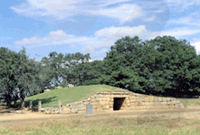 |
Seokbinggo means a freezer made of rocks. It is an ancient refrigerator only in Korea. It is located in Gyeongju, the ancient capital of the Silla Era (BC57-AD935). The appearance of this wonderful vestige is humble and simple. But you will not be disappointed at the entrance of the freezer. You can feel the cold from inside the structure. Half of Seokbinggo is underground while the other half is above ground, signifying the scientific propensity of Korea. The floor, walls, and ceiling are made of granite and have an airway. The walls are covered with limestone to keep off moisture and water. Address : Address : Gyeongsangbuk-do Gyeongju-si Inwang-dong 449-1 Tel : +82-54-779-6109 http://eguide.gj.go.kr |
Cheomseongdae Observatory
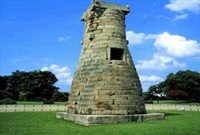 |
Cheomseongdae is the oldest existing astronomical observatory in Asia.
Constructed during the reign of Queen Seon-deok (632-647), it was used for observing the stars in order to forecast the weather. This stone structure is a beautiful combination of straight lines and curves, and was designated as National Treasure No.31 on December 20th, 1962. Address : Gyeonsangbuk-do Gyeongju-si Inwang-dong 839-1 Tel : +82-54-772-3632 http://www.eguide.gj.go.kr |
Poseokjeongji (Poseokjeong Pavilion)
 |
Standing on a rock next to a stream, Poseokjeongji (Poseokjeong Pavilion - surface area 7,432㎡) was designated as private monument No.1 on January 21, 1963. The location is originally where the royal villa of the Silla dynasty (57 B.C.~A.D. 935) had been, but the building no longer exists, and only a stone waterway shaped as a shell is left in its place. Address : Address : Gyeongsangbuk-do Gyeongju-si Bae-dong 454 Tel : +82-54-745-8484 http://www.eguide.gj.go.kr |
More Information
http://guide.gyeongju.go.kr/deploy/eng/
Others
Haeinsa Temple(Hapcheon-gun)
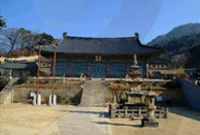 |
Haeinsa Temple was founded during the third year of King Ae-Jang's reign (802), by two monks Suneung and Ijung. The name "Haein" originates from the expression Haeinsammae of Hwaeomgyeong (Buddhist scripture), which means truly enlightened world of Buddha and our naturally undefiled mind. Address : Gyeongsangnam-do Hapcheon-gun Gaya-myeon Chiin-ri 10 Tel : +82-55-934-3000 From Deagu Seobu Terminal (Seongdangmot Station, Daegu Subway Line 1, Exit 3) Take an intercity bus to Haeinsa Temple. Bus schedule: 40min intervals / Estimated travel time: 1hr 30min http://www.haeinsa.or.kr |
Geoje Haegeumgang Island(Geojedo Island)
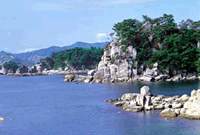 |
As one of the best sights in Geojedo Island, Geoje Haegeumgang is called the Geumgang (Sea Diamond) of the South Sea. As a rock island, Haegeumgang belongs to Hallyeo Marine National Park, which is assigned as an official green area in South Korea. Its original name was Galgotdo, because it is shaped like the spreading roots of arrowroot. These days it is known as Haegeumgang, meaning Mt. Geumgangsan in the sea. Address : Gyeongsangnam-do Geoje-si Nambu-myeon Galgot-ri 292-6 Tel : +82-55-639-3000 http://english.geoje.go.kr |
Oedo-Botania(Geojedo Island)
 |
Oedo-Botania is a marine botanical garden located in Hallyeo Maritime National Park, which has a beautiful view of the crystal blue South Sea and surrounding landscape. It is 4 kilometers away from Geojedo Island. About 20 minutes by ship from Gujora Port, past Naedo Island lies the European-like Oedo Island. In 1969, Lee Chang-ho first came to this island to escape from the wind and waves as he was fishing. He and his wife created this breathtaking landscape with all the care for 30 years. Address : Gyeongsangnam-do Geoje-si Irun-myeon Wahyeon-ri San 109 Tel : +82-70-7715-3330 http://tour.geoje.go.kr |
Cheonghakdong Village (Hadong-gun)
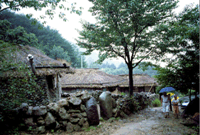 |
Cheonghakdong Village, located at the southern foot of Samsanbong Peak on Mt. Jirisan, maintains the traditional style of daily Korean life. ‘Cheonghak’ means a community where a crane of blue feathers lives.
Cheonghakdong is one area that was left virtually untouched throughout much of Korea's turbulent history. Address : Gyeongsangnam-do Hadong-gun Chungam-myeon Mukgye-ri Tel : +82-55-1330 From Hadong Bus Terminal (+82-55-883-2663), take city bus to Cheonghakdong Village (7:20, 8:20, 13:00, 15:00, 19:00 / 1 hour ride). http://www.hadong.go.kr |
















